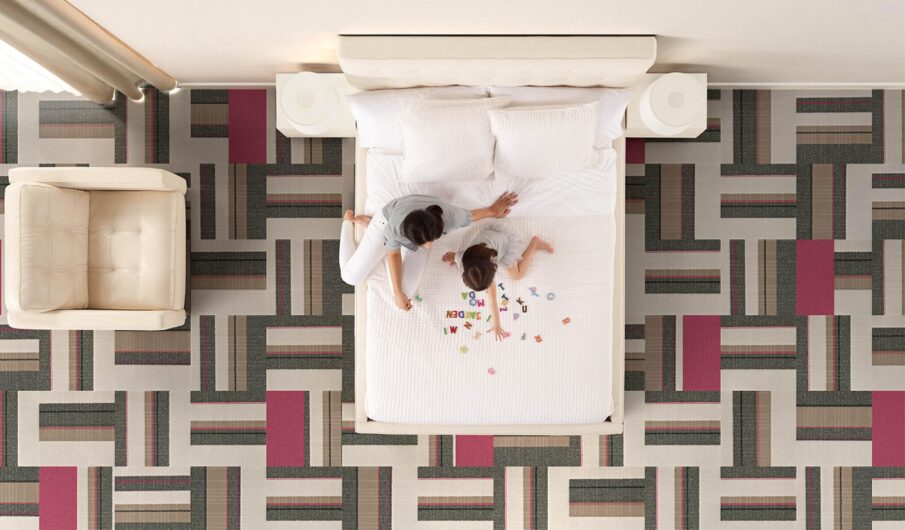Segment Marketing
Segment Marketing
Appealing to vertical market segments
Many commercial environment providers who started with corporate offices find growth opportunities in target market segments.
Manufacturer relationships with various market segments can ebb and flow based on sales needs. Too often, what is lacking is a serious commitment based on a clear market position. Manufacturers tend to gloss over the unique needs of different markets. Targeted value propositions, offerings, and messages are required to make a real connection and headway with customers.
Vertical Markets
Healthcare is a prime example. Like other large segments of the economy, like automotive or energy, you can’t work part-time in healthcare. As fully one-sixth of the U.S. Economy, healthcare means a lot of things – hospitals and other providers, insurance companies, medical manufacturers, pharmaceuticals, equipment, etc.
Healthcare professionals, like a Chief Medical Officer, can spot novices from a mile away. Compared with overall patient experience, infection control, insurance, doctors, nurses, etc., furniture is neither a top priority nor a budget item. From a built environments standpoint, a split between clinical (technical delivery of healthcare services) and admin (non-clinical).
Most new entrants into the healthcare market start with admin areas since they are more like other, more standard environments. It’s a start, but more of the money spent in this market is in the specialized areas serviced by specialty providers.

Hospitality is another segment that has gained popularity among more standard providers in recent years. There’s a good reason for this. These public and shared spaces get a lot of use, and the built environments are regularly refurbished for maintenance and image reasons.
In addition, hospitality design is a reference point for many other segments. Corporate offices, healthcare, retail, and education spaces are becoming more like hotels in the emerging service economy.
As with healthcare, the hospitality segment has unique demands. For one, the value chain diverges from other segments. The high volume of products has led to third-party purchasers, focused exclusively on Furniture, Fixtures, and Equipment (FF&E) that distribute everything from beds to toilet paper.
Global hospitality brands often set standards the independent franchisees (individual property owners) act on with local architecture firms and contractors. Value engineering during a buildout can lead to further complexity and opportunity for environment providers.

Education is another segment many industry players have pursued, sometimes with mixed results. Colleges and universities, as well as private primary institutions, typically have more funding than public K-12 schools, which creates sub-segments with different characteristics.
In some ways, the first group of secondary and private primary schools looks like a cross between other commercial environments and hospitality. Larger institutions seek to invest in their spaces to support administrative staff with emerging work styles. Like hospitality, education solutions can be a benchmark for other segments looking for environments that support learning.
Decision-making can be a bit more complicated with additional constituents — a board of trustees, donors, the provost, etc., but it’s clear that leading schools seek to set new benchmarks. Public primary schools are different because the funding is often limited and mostly comes from the state. Decision-making can be even more complicated with layers of administrators, local government, and parents.
Built environment providers who specialize their offering for this group benefit from a steady stream of new schools and refurbishments.
See also:

Retail Environments
Some industry providers target retailers and their stores. Some products are more suited for this market than others.
Office providers are less likely to have offerings that suit retail stores than those that can work in a more general environmental setting — lighting, carpet, and other surface materials. Seating can play a role in custom settings, such as lobbies, transportation, and theaters. Other retail-targeted providers fill primary spaces with shelving, registers, point of purchase, and custom millwork.
As with the hospitality segment, many projects are part of a franchise, where brand leaders work with designers to create guidelines for independent owners and contractors.

Consumer Enivronments
Many B2B companies have B2C envy, but not without reason. In the past, many B2B companies have been comfortable filling their role in a value chain and remaining anonymous to end users. However, technology and globalization present more choices in B2B supply chains. Providers risk getting commodified. In addition, more information about suppliers can be–and is increasingly expected to be — available. Choice and transparency create new pressures for anonymous B2B brands. Information in the hands of end users translates to purchasing influence. In many segments, including built environments, B2B brands must behave more like B2C brands.
Some current players and new entrants have recognized this trend. New companies and business units are being launched, acquisitions are being made, and new business models are appearing to fit the emerging needs better. New offer bundles and terminology shape the overall built environment landscape, including retail, co-working, shared spaces, and new leasing and ownership strategies.
Building a consumer brand is not a small task. B2C business models are built for volume, whereas B2B companies are built for value. Communicating that value and convincing customers is a large effort. Consumer brands invest 24% of their revenue on marketing, whereas manufacturing companies only 8%.
As with the small business segment, it can be even more difficult for successful B2B companies with engrained cultures and biases, not to mention margin expectations, to meet the confusing demands of end users.
Government Environments
Many built environment providers target GSA (U.S. General Services Administration) or other government contracts. Many industry players have dedicated teams focused on tracking contracts on the federal, state, and local levels. These projects often require RFP and bidding processes designed to acquire products and services with the best deal for the taxpayer.
Some GSA projects can look like other segments, like healthcare or education, but many have unique requirements for the military or high-security areas or simply because of unique purchasing or performance criteria as required by law.
Buying from the U.S. government can be tedious and not the most profitable, but the contracts can be large and stabilizing.
Horizontal Markets
A&D Segment
Architects and designers (A&D) aren’t a purchasing segment for built environments but an important influencer across all segments. Many manufacturers have exhibited some ambivalence about the A&D audience. Perhaps it’s because they are not direct buyers of built environment products, but there’s no doubt that they can heavily sway buying decisions. Unlike direct buyers, they help make purchasing decisions every day.
Architects and designers know about furniture, lighting, textiles, etc.; manufacturers are more likely to build brand recognition with this group. However, many manufacturers often don’t understand A&D, often viewing them as being exclusively concerned with aesthetics. This may be partly true, but architects and designers are not homogenous. Each has its own discipline and role in cities and rural areas as consultants or part of in-house teams.
Today, due to Apple and other players, a broader definition of design has become an important topic in nearly all parts of the commercial landscape, and built environments are no exception.
Small Business Environments
Many organizations have tried, with only moderate success, to serve small- and mid-sized businesses. In aggregate, these customers can represent many sales, making it an attractive target on paper.
As larger providers look to service the largest global customers, they must adapt to increasingly complicated selling and distribution strategies. They begin to look and behave more like their clients, which pushes them away from smaller customers.
Smaller customers have a different mindset, price tolerance, and buying expectations than a global corporation. To serve them well, built environment providers must decouple their value proposition even more than other segments. Despite its allure, no real leader has emerged to support this group.
Global Markets
Many larger U.S.-based providers in the built environments segment already have a footprint in markets in other parts of the world and are actively seeking other growth markets. Companies often start with mature markets in Europe, Japan, South America, and Japan. While buying processes may be similar, new entrants may find stiff competition with deeply rooted competitors in these areas. Getting a stronger foothold in Asia, particularly China, is too large an opportunity to overlook. Similarly, companies outside the U.S. have enjoyed great traction in their domestic markets and are looking for growth in places like North America. This puts new pressure on domestic players as more competitors emerge.
Smaller companies without that kind of scale may aspire to grow this way, but are often more focused on gaining share in the domestic market. In fact, concentrating on global operations by some companies can create opportunities for other smaller, more focused competitors.
Mature global organizations view these markets in a more comprehensive way. Eventually, they may recognize their country of origin is like all others, deserving a unique localization strategy for positioning, the offering, operations, etc. A matrix approach can emerge between vertical market segments like education and hospitality in different parts of the world.
